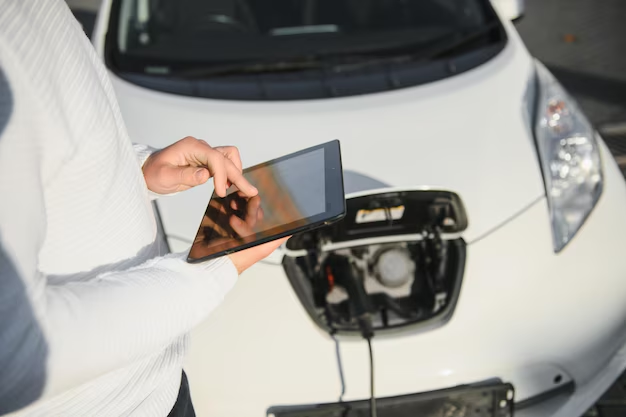Understanding the Electric Vehicle Tax Credit: A Comprehensive Guide
With the surge in electric vehicle (EV) popularity, the EV tax credit has become an enticing prospect for buyers looking to save money while going green. But how exactly does this tax credit work, and what can potential EV owners expect? Let's explore the intricacies of the EV tax credit, why it exists, and how it can impact your decision to switch to electric transportation.
🚗 The Necessity of the EV Tax Credit
As our world moves towards sustainable solutions, incentives like the EV tax credit play a crucial role. Designed to foster the adoption of electric vehicles, this credit helps offset the higher upfront cost of EVs compared to traditional gas-powered cars. By assisting consumers financially, these credits aim to cut down on carbon emissions and stimulate the green economy.
💰 What is the EV Tax Credit?
The EV tax credit is a government incentive designed to make electric vehicles more affordable. This non-refundable tax credit can reduce the amount of income tax you owe, directly impacting your annual tax return. However, it's important to understand its scope and limitations.
How Much Can You Save?
Currently, the EV tax credit can offer up to $7,500 in savings, depending on the type of vehicle and your tax liability. However, this credit isn't a one-size-fits-all amount. Instead, various factors, such as vehicle eligibility, taxation considerations, and manufacturer quotas, influence the final credit amount.
Eligibility Requirements
Not every EV model qualifies for the tax credit. Eligibility typically depends on:
- Battery Capacity: The vehicle must meet certain battery size thresholds.
- Manufacturer's Sales: Credits apply only until a manufacturer sells a certain number of qualifying vehicles.
- Vehicle Type: Even plug-in hybrids may qualify under specific conditions.
Ensuring your chosen model meets these criteria is essential when considering the credit.
🔍 Detailed Insights into How the EV Tax Credit Works
Understanding the full mechanics of how the EV tax credit works can be instrumental in your decision-making process.
The Phase-Out Process
Manufacturers face a phase-out of tax credits as they reach a sales milestone of 200,000 qualifying vehicles. Once this threshold is surpassed, the credit amount starts to decrease. Initially, it drops to 50% of the full credit for six months, then to 25% in the subsequent six months before eventually being phased out completely.
Claiming the Credit
To claim the EV tax credit, you need to:
- Ensure Vehicle Eligibility: Verify if your vehicle qualifies for the credit.
- Form 8936: File the appropriate form with your federal tax return.
- Consider Your Tax Situation: Since it’s non-refundable, you won't receive the excess if your tax liability is less than the credit amount.
This necessitates thoughtful planning, especially for those transitioning to EVs primarily for tax benefits.
🔄 Additional Considerations
State Incentives and Savings
Beyond federal incentives, many states offer their own tax credits or rebates to buyers of electric vehicles. These state-specific perks can compound your savings, making switching to an EV even more attractive. Research your local government's programs to maximize incentives.
The Impact on Leasing
Leasing an electric vehicle introduces a different dynamic. Since the tax credit usually applies to the leasing company as the vehicle owner, any associated savings are often reflected in the lease terms. Lease agreements can incorporate the credit into reduced monthly payments, which appeals to consumers looking for a less permanent commitment.
🔧 Real-World Examples and Practical Guidance
Let's say you're eyeing a new EV model. Understanding the financial implications of the EV tax credit should inform your decision. Here are some practical scenarios:
- Scenario 1: You purchase a qualifying EV when the manufacturer is nearly hitting the sales threshold. As a result, you might want to act quickly to take advantage of the full credit.
- Scenario 2: You've calculated your expected tax liability, and it's less than the potential credit amount. Explore additional deductions or credits for which you might qualify to utilize the full EV credit.
📋 Quick Summary of Key Considerations
Here's a handy summary of what to keep in mind when considering the EV tax credit:
- 🔌 Verify Vehicle Eligibility: Confirm that your chosen vehicle qualifies for the tax credit.
- 📉 Monitor Sales: Be aware of manufacturers nearing the 200,000 vehicle limit.
- 🗓 Timing is Key: Strategically plan your purchase to align with full credit availability.
- 💼 Utilize Additional Incentives: Leverage state-level tax benefits for cumulative savings.
- 📄 Tax Planning: Ensure your tax liability matches or exceeds the credit to maximize benefits.
🎯 Maximizing the EV Tax Credit Value
The EV tax credit is part of a landscape of incentives aimed at promoting sustainable energy usage. By combining federal, state, and leasing benefits, more consumers can embrace electric vehicle technology. Evaluating and strategizing your purchase timeline against these credits can enhance your savings considerably.
As electric vehicles become more prevalent, understanding incentives like the EV tax credit remains crucial. Armed with the knowledge of how these credits work, consumers are better positioned to make informed decisions aligning with their financial considerations and commitment to sustainability.
Through this guide, we hope you’re empowered to navigate the EV tax credit system effectively and align your future vehicle purchase with these valuable financial incentives. Consider this journey not only a shift in transportation but a step towards a greener future. 🌿

Related Topics
- Are Credit Card Fees Tax Deductible
- Are We Getting Child Tax Credit Payments In 2024
- Can I Pay Federal Taxes With a Credit Card
- Can I Pay My Taxes On a Credit Card
- Can I Pay My Taxes With a Credit Card
- Can I Pay My Taxes With My Credit Card
- Can I Pay Property Tax With Credit Card
- Can I Pay Taxes On a Credit Card
- Can I Pay Taxes With Credit Card
- Can You Claim Child Tax Credit With No Income